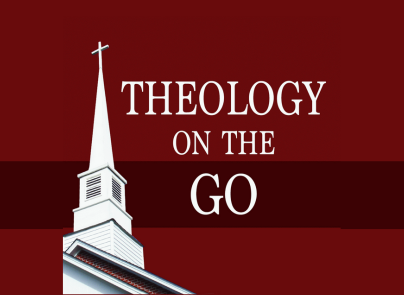Expository Preaching—The New Golden Calf

Like many preachers, one of my favorite things to read are sermons from the past. Whether it's Martyn Lloyd-Jones or the golden-mouthed John Chrysostom, I’m always intrigued by how faithful men throughout the ages have communicated God's Word to their hearers. But also, like many of you, I find myself struck by how different much of our modern preaching is from that of the saints of old.
I don’t mean different merely in terms of tone or eloquence or even what some might call “power,” though there are differences there as well. I mean different in method and emphasis. Our modern sermons, by and large, seem like entirely different specimens than what I find in the pages of Samuel Davies or Charles Spurgeon, for instance.
Homiletics Classes: Necessary but with Caveats
I took several preaching classes while in seminary. They were helpful in many ways. Each class typically culminated with the student preaching before his peers and professor, where he would be evaluated on the quality of his delivery, the clarity of his exegesis, his transitions, his adherence to time limits, and so on. These are good things. Exegesis, clarity, structure—none of these are enemies of faithful preaching. They matter.
We were also encouraged to read books about “the big idea,” “three-point sermons,” how to craft introductions and conclusions, and other such mechanical tools of the homiletic trade. Again, these are not inherently wrong. Much of it is useful.
But looking back, something vital was consistently underemphasized, if not entirely absent: unction, pleading, and prayer. It’s not that these themes were completely missing—they were mentioned here and there. But they were certainly not central. They weren’t treated as the lifeblood of true preaching. They weren’t the priority.
Perhaps that’s understandable since it’s hard to simulate unction in a classroom. The setting itself almost guarantees artificiality. After all, how can you genuinely plead, woo, and exhort to a room of peers who, ironically, are grading you on your “performance”—let’s call it what it is in such a setting. The very act of evaluation alters the nature of what’s happening. You can’t be both prophet and performer. The former demands the unfiltered urgency and gravitas of heaven, whereas the latter is shaped by the pressure to succeed in the class.
This is not a critique of homiletics classes per se, nor is it to suggest that every seminary does it the same way. I don’t claim to have the blueprint for a perfect preaching course, nor do I expect a classroom to produce a pulpit. I’m simply noting that, in my own experience—this is where the drift begins. You learn to preach in a certain way. That way is somewhat stilted. You see others doing the same. A certain preaching culture is then formed. A method is normalized. And over time, what may have started as a small shift away from “the ancient paths” becomes the new standard, and no one is the wiser.
Have We Overcorrected?
Another factor contributing to the state of modern preaching is the broader evangelical landscape. In much of contemporary evangelicalism, the sermons are light on Scripture and heavy on sentiment. The preacher paces the stage like a motivational speaker, sharing humorous anecdotes, personal stories, and inspirational platitudes. The Bible may be read, perhaps even quoted once or twice, but rarely is it opened up and explained. The exposition of the Word is eclipsed by the personality of the preacher. The result is a kind of religious entertainment—slick, polished, emotionally charged, and hollow.
In response to this trend, the Reformed world has rightly recovered a high view of Scripture in the pulpit. We insist that preaching must be text-driven. We labor to explain what the passage means, in context, with careful attention to grammar, history, and theology. We train our men to open the Word of God and preach it faithfully, verse by verse. This is a needed corrective. Faithful preaching must be anchored in the text.
But here is where we must be careful. For while the Reformed response has been correct in principle, it has sometimes fallen short in practice. We have corrected the sentimentalism of evangelical preaching by replacing it with exegesis—but in doing so, we have too often stopped there. We have taught our men to expound the Word but not necessarily to preach it. We have trained them to analyze the text, but not to apply it with urgency. And so, we have traded emotionalism for sterility. We have insisted on doctrinal depth but have neglected the spiritual burden that must accompany it.
Let me put it another way. Exposition alone is not preaching. That is teaching. Preaching is more than the delivery of biblical data. Preaching is the heralding of truth that lays claim to the soul. It is truth through personality, yes—but more than that, it is truth pressed upon the conscience with divine authority. It is the living Word proclaimed by a living man to other living souls, calling them to believe, repent, rejoice, tremble, and obey.
I believe that our fear of shallow preaching has driven us into a lifeless pulpit. The answer to emotionalism is not mere data dumping cloaked with religious language. We cannot be content with sermons that merely explain. We need sermons that wound and heal, that break the heart and bind it up with gospel balm. We need preaching that sounds less like a lecture and more like a lifeline to desperate sinners.
So, what’s the solution? The time-honored method of experiential preaching.
What is Experiential Preaching?
The modern pulpit, especially in Reformed and Presbyterian contexts, has suffered from a significant loss of what older generations have called experiential preaching. Experiential preaching is preaching that not only explains the Word of God but presses it experientially upon the conscience with power, urgency, and spiritual application.
To give you an example of this, consider the sermons of Spurgeon, J.C. Ryle, Samuel Davies, Jonathan Edwards, and the Puritans. Their sermons were not merely informational. They were confrontational in the best sense. They were 90% application, 10% exegesis. It was urgent, warm, and searching. It was intent on ferreting out sinners, pleading with them to close with Christ. Explaining the text was important, but only in the sense that it was applied to the hearer with specificity. It sounded more like preaching and less like teaching.
There is a difference between the two, after all—these were no lectures in the halls of the seminary. These were sermons filled with invitations, warnings, comforts, and rebukes. The Word was not simply explained—it was wielded. Their aim was not just to inform the mind but to awaken the conscience, to expose the heart, and above all, to press Christ upon the hearer. They did not merely ask, “What does this text mean?” but “What does this text demand of you, right now?”
Today, that ratio has largely been reversed. Most sermons I hear are about 90% exegesis, 10% application—if that. The focus is to convey information, parse Greek verbs, outline historical context, and deliver doctrinal precision. Again, none of these are bad. We need doctrinal clarity. We need rigorous exegesis. But if preaching becomes little more than a theological lecture, we have missed the point entirely. Paul did not charge Timothy to “exegete the Word,” but rather to preach it. And there is a world of difference between the two.
From where I’m sitting, most modern pulpits sound more like seminary classrooms than sacred desks. Information is flowing. Brains are engaged. But the heart? The conscience? The will? Too often, they are left untouched.
We need teaching, but teaching is not preaching. Preaching is heralding. Preaching is confronting. Preaching is pleading. Preaching is not the delivery of data, but a divine summons. It is an urgent call from heaven to earth, issuing from a man who has felt the weight of eternity and has come to speak on behalf of the Living God. That’s experiential preaching. It is preaching that aims not merely at the intellect, but at the heart. It is preaching that exposes sin, exalts Christ, and calls the hearer to respond. It is preaching that dares to say, “You must be born again,” not just, “Here is what the doctrine of regeneration means.”
And let’s be honest: this is not merely a stylistic difference. It reflects something deeper—a difference in how we understand the purpose of preaching itself. For many today, preaching is seen as a transfer of information. But for our forefathers, it was the appointed means by which God confronts, comforts, and converts sinners. One fills the head, whereas the other breaks the heart and binds it up in Christ.
We would do well to recover the old paths—not because they were old, but because they were biblical. We need preaching that pleads and woos. Such preaching cannot be mass-produced. It doesn’t emerge from technique or training alone. It is born of prayer, forged in the secret place, and marked by a man who has seen the glory of God and cannot remain silent about Him.
Perhaps this is why experiential preaching is often neglected in modern pulpits. It is difficult. It requires more than mere study. It requires a deep and living relationship between God and the preacher, and likewise between preacher and his congregation. It is something that can’t be manufactured in the study. In fact, studying is the easy part.
Expository Preaching is Good—But It’s Not Everything
This is not a rejection of biblical exegesis or lectio continua preaching—or what we now call expositional, verse-by-verse preaching. Such things can be useful and have their place. But with few exceptions, you would have a difficult time proving that this was the normal practice of our forefathers, many of whom were powerful preachers and who saw mighty outpourings of the Spirit in their day.
I have preached verse-by-verse through many books of the Bible, both Old and New Testaments. I’m not saying we jettison this practice. But I am saying we have gone in a different direction than how most preaching has been done in the past, and at the very least, it is worth asking why this is, and whether the shift is justified.
It’s indisputable that all good preaching is text-driven. But not all text-driven preaching is done in the same way. As important as the intellect is, it is not everything—it is not even the main thing when it comes to preaching the Word of God.
This is why I am advocating for a decisive, conscientious move towards more experiential preaching in our pulpits. If it was good enough for Davies, Spurgeon, Whitefield, the Puritans, and most Reformed preachers up until very recent times—perhaps, just maybe, it should be good enough for us. If heaven has used it to shake the earth in the past, we can be confident that it will be used to shake the earth today.
Ryan Denton is a Presbyterian minister and church planter (Vanguard Presbyterian Church). His work has appeared at RHB, DesiringGod, Founders, The Confessional Presbyterian, and others. He has a Th.M. from Puritan Reformed Theological Seminary. You can find him on X @texaspreacher.




